DEEP RACISM: THE FORGOTTEN HISTORY OF HUMAN ZOOS
By Staff, www.PopularResistance.org
Racism is deeply embedded in our culture. Slavery of African people, ethnic cleansing of Native Americans and colonialist imperialism are seeds that intertwine to create racism that still has impacts today. One example of the sad human history of racism — of colonizers seeing themselves as superior to others — is the long history of human zoos that featured Africans and conquered indigenous peoples, putting them on display in much the same way as animals. People would be kidnapped and brought to be exhibited in human zoos. It was not uncommon for these people to die quickly, even within a year of their captivity. This history is long and deep and continued into the 1950s. Several articles below with lots of photos so we can see the reality of this terrible legacy. KZ
Through the 1950s, Africans and Native Americans Were Kept In Zoos As Exhibit
By M.B. David
Political Blindspot, February 13, 2013
Throughout the early 20th century, Germany held what was termed a, “Peoples Show,” or Völkerschau. Africans were brought in as carnival or zoo exhibits for passers-by to gawk at.
Throughout the late 19th century, and well into the 1950′s, Africans and in some cases Native Americans, were kept as exhibits in zoos. Far from a relic from an unenlightened past, remnants of such exhibits have continued in Europe as late as the 2000′s. Above photograph is from Brussels, Belgium in 1958.
Brussels, Belgium in 1958
Only decades before, in the late 1800′s, Europe had been filled with, “human zoos,” in cities like Paris, Hamburg, Antwerp, Barcelona, London, Milan, and Warsaw. New York too saw these popular exhibits continue into the 20th century. There was an average of 200,000 to 300,000 visitors who attended each exhibition in each city.
Carl Hagenbeck of Germany ran exhibits of what he called, “purely natural,” populations, usually East Asian Islanders, but in 1876, he also sent a collaborator to the Sudan to bring back, “wild beasts and Nubians.” The traveling Nubian exhibit was a huge success in cities like Paris, London, and Berlin.
The World’s Fair, in 1889 was visited by 28 million people, who lined up to see 400 indigenous people as the major attraction. The 1900 World’s Fair followed suit, as did the Colonial Exhibitions in Marseilles (1906 and 1922) and in Paris (1907 and 1931) which displayed naked or semi-naked humans in cages. Paris saw 34 million people attend their exhibition in six months alone.
Just four years shy of the 20th century, the Cincinnati Zoo kept one hundred Sioux Native Americans in a mock village at the zoo for three months.
Ota Benga at Bronx Zoo
In 1906, the amateur anthropologist Madison Grant, who was the head of the New York Zoological Society, put a Congolese pygmy Ota Benga, on display at the Bronx Zoo in New York City. The display was in the primate exhibit, and Ota was often made to carry around chimpanzees and other apes. Eugenicist and zoo director William Hornaday labeled Ota, “The Missing Link.” The public flocked to see the display.
Benga shot targets with a bow and arrow, wove twine, and wrestled with an orangutan. Although, according to the New York Times, “few expressed audible objection to the sight of a human being in a cage with monkeys as companions,” controversy erupted as black clergymen in the city took great offense. “Our race, we think, is depressed enough, without exhibiting one of us with the apes,” said the Reverend James H. Gordon, superintendent of the Howard Colored Orphan Asylum in Brooklyn. “We think we are worthy of being considered human beings, with souls.”
In 1906, the Bronx Zoo kept Ota Benga on a human exhibit. The sign outside of her fenced in area of the primate exhibit read, “Age, 23 years. Height, 4 feet 11 inches. Weight, 103 pounds. Brought from the Kasai River, Congo Free State, South Central Africa, by Dr. Samuel P. Verner. Exhibited each afternoon during September.”
These sorts of, “human zoos,” continued even later. The Brussels 1958 World’s Fair kept a Congolese village on display. Even as late as April 1994, an Ivory Coast village was kept as part of an African safari in Port-Saint-Père (Planète Sauvage), near Nantes, France.
In Germany, as late as 2005, Augsburg’s zoo in Germany had similar exhibits. In August 2005, London Zoo also displayed humans wearing fig leaves, and in 2007, Adelaide Zoo housed people in a former ape enclosure by day. They were, of course, allowed to return home at night, unlike many of the earlier incarnations of these racist displays.
Many people console themselves with the belief that the racism of yesterday remains safely in the past. But the echoes of the, “human zoo,” into recent years show that this is far from the case. The racism of the past continues to bleed through into the present.
UNCOVERED: The Haunting ‘Human Zoo’ of Paris
In the furthest corner of the Vincennes woods of Paris, lies the remains of what was once a public exhibition to promote French colonialism over 100 years ago and what we can only refer to today as the equivalent of a human zoo.
In 1907, six different villages were built in the Jardin d’Agronomie Tropicale, representing all the corners of the French colonial empire at the time– Madagascar, Indochine, Sudan, Congo, Tunisia and Morocco. The villages and their pavillions were built to recreate the life and culture as it was in their original habitats. This included mimicking the architecture, importing the agriculture and appallingly, inhabiting the replica houses with people, brought to Paris from the faraway territories.
The human inhabitants of the ‘exhibition’ were observed by over one million curious visitors from May until October 1907 when it ended. It it estimated that between 1870 up until the 1930s, more than one and a half a billion people visited various exhibits around the world featuring human inhabitants.
In 1906, this Congolese replica “factory” was built in Marseille as part of a colonial exposition. Congolese families were also brought over to work in the factory. In February 2004 its remains were burnt down.
Today, the Jardin d’Agronomie Tropicale is treated as a stain on France’s history. Kept out of sight behind rusty padlocked gates for most of the 20th century, the buildings are abandoned and decaying, and the rare exotic plantations have long disappeared.
In 2006 the public was granted access to the gardens but few people actually visit at all. The entrance is marked by a 10 ft Asian inspired portico of rotting wood and faded red paint that stands like the ghost of a slain gatekeeper. Visitors can instantly feel a sense of anxiety upon entering and quickly develop an understanding that this is not a place that the French are proud of. A hundred years on and there’s still an eerie presence of ladies clutching sun parasols and men in bowler hats arriving, eager to see the show on the other side of this now crumbling colonnade.
Only some of the pathways remain clear of overtaking nature and they all lead to various vandalized monuments, condemned houses with danger signs and abandoned paraphernalia that you can’t make any sense of.
A doorway to one of the houses at the Indonesian pavillion
The Moroccan pavillion
I sneaked over a fence into this eerie structure hidden at the back of the park, a workshop where scientists and students came to study tropical wood brought back from the colonies.
More than thirty-five thousand men, women and children left their homelands during the high noon of Imperialist Europe and took part in ‘exotic spectacles’ held in major cities like Paris, London and Berlin. Entire families recruited from the colonies were placed in replicas of their villages, given mock traditional costumes and paid to put on a show for spectators. An opportunity to demonstrate the power of the West over its colonies, the expositions became a regular part of international trade fairs and encouraged a taste for exoticism and remote travel.
Europeans gawked at bare-breasted African women and were entertained by re-enactments of “primitive life” in the colonies. Here, anthropologists and researchers could observe whole villages of tribespeople and gather physical evidence for their theories on racial superiority.
The Tunisian pavilion.
While the villagers had come to Paris of their own free will and were paid to be on display, they were equally oppressed, exploited and degraded. The distinction between person and specimen was blurred. They were not guests here. They were nameless faces on the other side of a barrier.
When the Exposition Tropicale ended its four month run in October 1907, it is unknown how many of the participants returned home safely. Villagers were enticed by lecherous agents or even mislead by their own village chiefs into joining circus-like troupes that toured internationally. From Marseille to New York, their vulnerability in a capitalist world was exploited every step of the way.
Some would eventually find their way home after a few years, but others would never make it. If they didn’t fall victim to diseases unknown to them; smallpox, measles, tuberculosis; they would die of adversity in an alien world.
There are rumors that one building, the Indochine pavillion, will be refurbished to function as a small museum and research centre. It may be an intelligent solution to a touchy subject. If the French government destroyed the gardens, there would be accusations of trying to cover up the past. If they were fully restored, it might be construed as a commemoration to a France’s once very sinister use of power.
And so the garden remains, hauntingly beautiful; a neglected embarrassment.
Gardeners stopped coming a long time ago. Wild and verdant, mutations of untamed tropical plants plucked from their homelands are left to fester in a junkyard of French colonial history. They are the ghosts of this purgatory, waiting for a ticket home.
Address: Jardin d’Agronomie Tropicale, 45 bis Avenue de la Belle Gabrielle, 75012 Paris. RER station: Nogent-sur-Marne
Sarah’s Story: A Colonial Showpiece
The primitiveness of putting the ‘primitive’ on display began during the modern period when explorers like Columbus and Vespucci lured natives back to Europe from their homelands. To prove the discovery of exotic lands, the natives were flaunted and paraded like trophies. But what began as curious awe deteriorated into an era of racial superiority and the invention of the savage.
A 20 year-old girl from South Africa known as Sarah “Saartjie” Baartman would be emblematic of the dark era that gave rise to the popularity of human zoos. She was recruited by an exotic animal-dealer on location in Cape Town and traveled to London in 1810 to take part in an exhibition. The young woman went willingly under the pretense that she would find wealth and fame. Exhibitors were looking for certain qualities in their ‘exotic’ recruits that either coincided with the European beauty ideal or offered unexpected novelty. Sarah had a genetic characteristic known as steatopygia; a protuberant buttocks and elongated labia.

She found herself being exhibited in cages at sideshow attractions dressed in tight-fitting clothing that violated any cultural norms of decency at the time. A few years later she came to Paris where racial anthropologists poked and prodded and made their theories. Sarah eventually turned to prostitution to support herself and drank heavily. She had been in Europe for only four years.
When she died in poverty, Sarah’s skeleton, sexual organs and brain were put on display at the Museum of Mankind in Paris where they remained until 1974. In 2002, President Nelson Mandela formally requested the repatriation of her remains. Nearly two hundred years after she had stood on deck and watched her world disappear behind her, Sarah Baartman finally went home, where the air smelled of buchu and mint, and the veld called out her name.
Additional images via Les Expositions universelles de Paris, Invisible Paris, Shane Lynam and Olivier Aubert
OF OTHER RACES IN HUMAN ZOOS AND THE FALLACY OF WHITE/CAUCASIAN MENTAL SUPREMACY
Trip Down Memory Lane
October 1, 2012
It is general historical knowledge that African civilization came before the rise of caucasian race. However, the Eurocentric historians have always tried to make Africa and other human race to seem inferior to the caucasian race. The historical achievement of civilizations like both the Egyptian and Nubian civilization were hidden until recently historians like Cheikh Anta Diop, Ivan Sertima, Amiri Baraka, Molefi Kete Asante,Rashidi Runoko and others came in to reveal it to the world.Africans and people from other race contributed immensely in literature,science,astrology,music and other forms of art. Despite all this, with the rise of caucasian race in human race recently in history, they rather saw all other race especially Africans (blacks) as primitive beings whose mental capacity are akin to that of apes or monkeys. So in other to erroneously satisfy their myopic theory of Darwinism human zoos were erected across Europe to make mockery of other human race.
The Europeans/caucasians claim American native Indians were cannibals ( a word coined by Christopher Columbus upon landing in new world) but cannibalism has been well-known in Europe for many years.
In Gough’s Cave, England, remains of human bones and skulls from approximately 15,000 years ago, suggest that cannibalism took place amid the people living in the cave.
Archaeologists can trace back evidence to about 7,000 years ago proving mass cannibalism in Germany – even children and unborn babies were on the menu.
http://www.independent.co.uk/news/world/europe/evidence-of-mass-cannibalism-uncovered-in-germany-1835341.html.

The Gruesome History of Eating Corpses as Medicine
Eating other humans’ flesh and drinking their blood for medicinal purposes is well-documented:
Take when Pope Innocent VIII was on his deathbed in 1492, his doctors used vampire-like technique on 3 boys and had the pope drink their blood. The boys were bled until they died, and the pope died as well. Of course this was the same time that Columbus “discovered” America and coined the word “cannibal.”
The medical journal, The Lancet, published an article regarding corpse medicine. The article recounts notable doctors of 1600s England digging up bodies to use the bones for medicine. Noted in the article was the fact the human body was widely acknowledged as the “therapeutic agent”.
Medical treatments included ingesting flesh, bone, or blood, along with a variety of moss sometimes found on human skulls right up until the late 18th century. Use of medicines made from blood and other human body parts was widespread in Europe. Fresh blood was used as a cure for epilepsy and other body parts to treat a variety of diseases, including arthritis, warts, diseases of the reproductive system, sciatica, and even teenage acne…
One of the books this stuff is documented in Cannibal The History of People Eaters.
It’s quite a conceit to present the cultures of non-white peoples as deviant and hold them and their cultures up to spectacle….whilst whites and European cultures are quarantined as inherently sound and their cultures as apexes of civilization.
Europeans had no ethical or moral issues at all with cannibalism – for example – until the 19th century. The bodies of other humans was just another natural product available for use and recycling.
Candles made of human fat were used up until the 1880s.
King Charles II of England sipped ‘The King’s Drops’, a powder mix of human skull with alcohol.
Thomas Willis, a 17th-century pioneer of brain science, would routinely brewed a drink for apoplexy (or bleeding), that mingled powdered human skull and chocolate.
Did other Europeans consider these practices deviant and depraved? Was the King of England or respectable English scholar merely ‘racially primitive’ because of the liquids they drank?
http://www.oxfordscholarship.com/view/10.1093/acprof:oso/9780195181821.001.0001/acprof-9780195181821-chapter-7
Of course not, after all, a French Franciscan monk of the same time was making marmalade out of human blood, and even wrote a recipe for it. The instructions, in part, read like this:
“stir it to a batter with a knife…pound it…through a sieve of finest silk.”
Jam-making aside, the eating of human bodies could also be used as military weapon – something that was traditionally buried, down-played and ignored – in the way that rape in war has been hidden or dismissed.
Take the Crusades, for example. The 1st Crusade in particular, and the Siege of Maarat, or Ma’arra, in 1098 in the city of Ma’arrat al-Numan, in what is modern-day Syria. An eyewitness of the siege wrote, “In Ma’arra our troops boiled pagan adults in cooking-pots; they impaled children on spits and devoured them grilled.” The chronicler Albert of Aix seemed to rank Muslims lower than dogs when he wrote, “Not only did our troops not shrink from eating dead Turks and Saracens; they also ate dogs!”
Guibert of Nogent, in his work Historia Hierosolymitana noted that the Christian barbarians (or Tafurs) were feared by the Muslims because of their cannibalism. For that reason, on at least one occasion, the Tafurs publicly “roasted the bruised body of a Turk over a fire as if it were meat for eating, in full view of the Turkish forces.”
Guibert notes that the Franks (Germanic clans) also practiced cannibalism, but they did so “in secret and as rarely as possible.”
http://www.thelancet.com/journals/lancet/article/PIIS0140-6736(08)60907-1/fulltext

With all these past,the blacks and people of other race did not see Europeans as primitive and of inferior brains to use against them. In fact, when Africa had introduced way of writing the white race was oblivious of how to communicate through letters. Yet when the whites of yore got the opportunity of enlightenment it did not take them long to see all other human race as inferior to them even when some of them were aware that that perception was and is still wrong. They rather went on to introduce human zoos to shame fellow humankind.

Advertising post for human zoo in Germany

Human Zoos

Human zoos were 19th and 20th century public exhibits of people like a museum pieces (also known as “an ethnological exposition”, “the exhibition of human beings” and “a Negro Village”)- mostly non-Europeans. Africans, Asians, Indigenous people and many others were often caged and displayed in a makeshift ‘natural habitat’. These human displays were very popular and shown at world fairs where they drew Europeans and Americans in their tens of millions – from Paris to Hamburg, London to New York, Moscow to Barcelona.

The Edmond Pezon’s menagerie: this is Zizi-Bamboula.
This curiosity regarding indigenous races had a history at least as long as colonialism and Columbus brought indigenous Americans from his voyages in the New World to the Spanish court in 1493. Human zoos and exhibitions of exotic populations became common in the 1870s in the midst of the New Imperialism period. They could be found in many places including Hamburg, Antwerp, Barcelona, London, Milan, New York, and Warsaw, and hundreds of thousands of people visited these exhibitions.

Negro Village
The goal of that was to demonstrate people born in Asia and Africa, and show their primitive and sometimes even savage lifestyle. Such zoos, especially in Germany, had strongly pronounced racist implication, which was taken from the Social Darwinism currents, when people from Africa were often demonstrated together with monkeys in order to show their common origin.

This is the settlement of Iroquoises. People wear their traditional costumes and headwears decorated with feathers.
In 1874, Carl Hagenbeck, a German merchant in wild animals and entrepreneur of many Europeans zoos, decided to exhibit Samoan and Sami people (Laplanders) as ‘purely natural’ populations. In 1876, he sent a collaborator to the Egyptian Sudan to bring back some wild beasts and Nubian people.

Hagenback`s human zoo “Sudanese troupe”
The Nubian exhibit was very successful in Europe and toured Paris, London, and Berlin. He also dispatched an agent to Labrador to secure a number of ‘Esquimaux’ (Inuit) from the settlement of Hopedale; these Inuit were exhibited in his Hamburg Tierpark.

A family of Labradorean Eskimo is in Hamburg or Berlin Zoo, 1880. They adopted Christianity and took German names. Men’s name was Abraham Ulrikab, his wife’s name was Ulrika, they had two children — Sarah and Mary, their nephew’s name was Tobias; there were another family with them. It was the way to earn money for them; the family was to clear off debts and needed money. All of them died within five months because of smallpox which they didn’t have immunity to. Abraham Ulrikab made notes writing the Inuktuit language; he described all the humiliations that his family underwent.

Geoffroy de Saint-Hilaire, director of the Jardin d’acclimatation, decided in 1877 to organize two ethnological spectacles that presented Nubians and Inuit. That year, the audience of the Jardin d’acclimatation doubled to one million.

African child in Negro village being fed like a monkey
Between 1877 and 1912, approximately thirty ethnological exhibitions were presented at the Jardin zoologique d’acclimatation.
Native people of Suriname were displayed in the International Colonial and Export Exhibition in Amsterdam held behind the Rijksmuseum in 1883.

Ceylonese citizens were also shown at such exhibitions.
Both the 1878 and the 1889 Parisian World Fairs presented a Negro Village (village nègre). Visited by 28 million people, the 1889 World Fair displayed 400 indigenous people as the major attraction.

The idea of “a Negro Village” was the most popular in Germany, where the ideas of Social Darwinism were widely spread and accepted by many people. Even Otto Bismarck visited “the Negro Village” exhibition.

Negro Village
The 1900 World Fair presented tin nude in cages, often nude or semi nude.

“Negro Villages” are at the exhibitions in France.

Parisian world fair
The 1931 exhibition in Paris was so successful that 34 million people attended it in six months, while a smaller counter-exhibition entitled The Truth on the Colonies, organized by the Communist Party, attracted very few visitors.


This is a Somalia village, which was demonstrated in Luna Park, St. Petersburg.

Negro Village
One of the first modern public human exhibitions was PT Barnum’s exhibition of Joice Heth on February 25, 1835. Joice Heth (c.1756–February 19, 1836) was an African American slave. In 1835 toward the end of her life, blind and almost completely paralysed (she could talk, and had some ability to move her right arm), she was purchased by PT Barnum. He began his career as a showman by exhibiting her, claiming she was the 160-yearold nurse of George Washington. She died the next year; in all probability no more than 80 years old.
The Chinese Siamese twins Chang and Eng Bunker.

A caricature of Saartjie Baartman, called theHottentot Venus. Born to a Khoisan family, she was displayed in London in the early 19th century. Saartjie Baartman of the Namaqua, referred to as ‘the Hottentot Venus’, who was displayed in
London until her death in 1815.

This is Tuareg.
During the 1850s, Maximo and Bartola, two microcephalic children from Central America, were exhibited in the US and Europe under the names ‘Aztec Children’ and ‘Aztec Lilliputians’.

Five Indians from the Kawesqar tribe (Tierra del Fuego, Chili) were kidnapped in 1881 and transported to Europe to be demonstrated in a human being zoo. All of them died a year later.
The whole thing was staged and played to Western stereotypes:

African mother and child in negro village
- Arabs were like in “Thousand and One Nights” from the 1300s.
- American Indians were like in the cowboy-and-Indian books of the time.
- South Sea Islanders were bare breasted and carefree – even though, as Gauguin discovered, that world was long gone if it ever was (but painted it anyway).
- Black Africans were shown as savage hunters, spears and all, just a step above wild animals – even though most Africans of the time were herders and farmers. One show was called “Gorilla Negroes”.

The picture of Australian aborigines, the Crystal Palace, 1884.
The Pygmies at the St Louis fair, on the other hand, liked to smoke cigars and wear top hats, which screwed up the show’s racist evolutionary ranking.

Pygmies were made to dance during numerous exhibitions to entertain visitors.
Some feared for the safety of white women. In both Victorian England and Nazi Germany, some opposed the shows out of fear of race mixing between black men and white women.

Africans shooting archery in 1904 St Louis “Savage Olympics Exhibition”

Human Zoo

see: http://www.scotsman.com/news/international/zoo-sparks-row-over-tribesmen-props-for-animals-1-715365
At least as late as 2005 you could still see “African tribesmen” in grass skirts at a Western zoo (in Augsburg, Germany). But since the 1930s such things have become uncommon: film, and later television and cheap air travel, were able to give Westerners a much richer-seeming (but not always truer) experience of native peoples.

It is a very shameful period for Europeans, when people earned money kidnapping other people and showing them to others. So, the last African disappeared from the European Zoos in 1936. However, the last “Negro Village” was demonstrated at the Expo exhibition in Brussels in 1958.

MODERN HUMAN ZOO
As if this human zoo racism against blacks are over, recently in India the govt decided to use the tribal hinterland black Andamanese for human zoo to generate tourist attraction to their country. Though the intended human zoo did not materialized but some Indians force Andamanese to dance for tourist in their nakedness for money.

Andamanese girls that were being used as human zoo by the Indian govt.
A human zoo, which features women from a protected tribe dancing for tourists in exchange for food, opened on India’s Andaman Islands.
Jarawa tribal women — some of them naked — are being lured to dance and sing for tourists and to live in a “Jarawa Habitat”.
Under Indian laws designed to protect ancient tribal groups susceptible to outside influence and disease, photographing or coming into contact with the Jarawa and some of the Andaman aborigines had been banned, but the Indian government seems to be looking the other way on the Human Zoo.

Tourists shoot photos and video of a ancient tribe, an indigenous people belonging to the Indian Andaman Islands, and treat them like animals in a zoo.
The tribe, thought to have been among the first people to migrate successfully from Africa to Asia, lives a nomadic existence in the lush, tropical forests of the Andamans in the Indian Ocean.
India’s Tribal Affairs Minister Sanjay Krishnabba Chandra said that they are looking into the situation to make sure that all the women in the zoo are treated properly – feed, bathed and cared for on a daily basis.
SeMany Indian citizens are outraged about the Human Zoo.
“It’s deplorable. You cannot treat human beings like beasts for the sake of money. Whatever kind of tourism is that, I totally disapprove of that and it is being banned also,” an Indian MP added. “(source:ehttp://weeklyworldnews.com/headlines/42430/human-zoo-opens-in-india/) the story below:
‘Human Zoo’ Allowed Tourists to Throw Bananas at Islanders
What horrible human outrages does this monstrous world of ours bring today? Video of a “human zoo” in India’s Andaman Islands, featuring women from the Jarawa tribe, ordered to dance for tourists in exchange for food.
The video, first published by Guardian sister paper The Observer, apparently depicts a bribed policeman ordering the women to dance for tourists “on safari.”
“Dance,” the policeman instructed. The girls in front of him, naked from the waist up, obeyed. A tourist’s camera panned round to another young woman, also naked and awkwardly holding a bag of grain in front of her. “Dance for me,” the policeman commanded.
To shield tribes like the Jarawa from disease and culture shock, Indian laws ban outsiders from seeking out or photographing the people. Nonetheless,
On the day the Observer visited, when the gates opened the cameras immediately started clicking. Tourists threw bananas and biscuits to the tribes people at the roadside, as they would to animals in a safari park

This tribe began to have a contact with the modern world only at the end of XX century. Its population is about 300-400 people, locals and tourists are banned from contacting them, take their pictures and videos, otherwise, the offender will be arrested and brought to justice.However, for a bribe – about $ 560 – tourists may violate these prohibitions, and local police turn a blind eye to it.
[T]he price of a day out with the Jarawa: up to 15,000 rupees (£185) to buy off the police, another 10,000-15,000 rupees on top of that for a car, a driver, gifts for the Jarawa, and biscuits and snacks. Contact is guaranteed, he promised.
Believed to be the descendants of the first humans to migrate successfully from Africa to Asia, there are roughly 400 Jarawa alive today, the AFP reports. They began “to venture out of the jungle in any numbers” in 1998, prompting the government to create “a buffer zone” for the tribe in 2007. “Forced coexistence would be total genocide for them,” according to Anstice Justin, head of the region’s Anthropological Survey of India.

Though officials mostly agree that outrage is the appropriate response to this video (even those opposed to the protection laws don’t want this scandal attached to them) there is some dissent over the appropriate amount of outrage. We return to the AFP:

“Before the 2004 tsunami, people might have forced them to dance and there may have been some much smaller violations since then,” Justin said by telephone from the capital Port Blair.
“The video appears to be six to seven years old when Jarawas remained unclothed but now they wear dresses in public,” Director-General of Police Samsher Deol said.

Andamanese tribal people at the beach watch this:
The bribed officer from the video will reportedly “have his future promotion delayed by six months” as punishment.
It is about time every black person living everywhere should be given a needed protection and right to their dignified way of living without exploitation by the governments that control their lives. These Andamanese are the original inhabitants of India before the so-called white Indian Skin came to occupy their land. They must be seen as the bonafide owners of the land and if no compensation is given to them by the Indian government,their right to a dignified living must not be exploited through human zoo experimentation in the name of tourism. It is so racist and disrespectful to this ancient tribe of African origin.
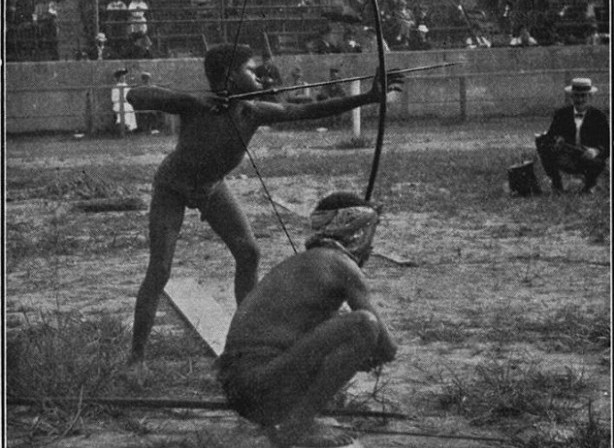
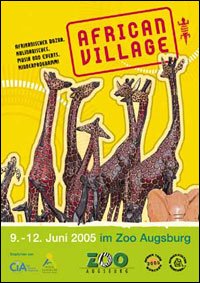
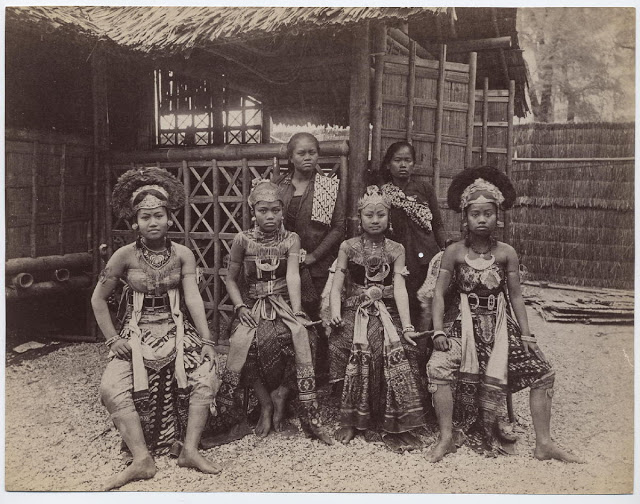
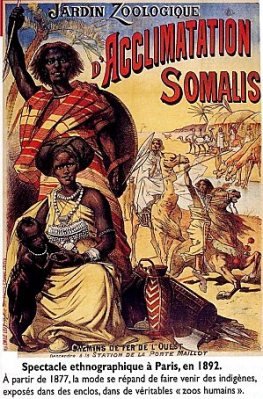
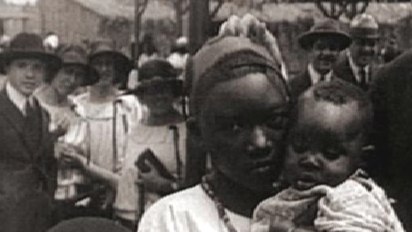
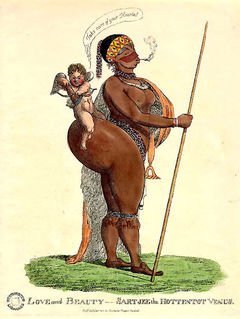
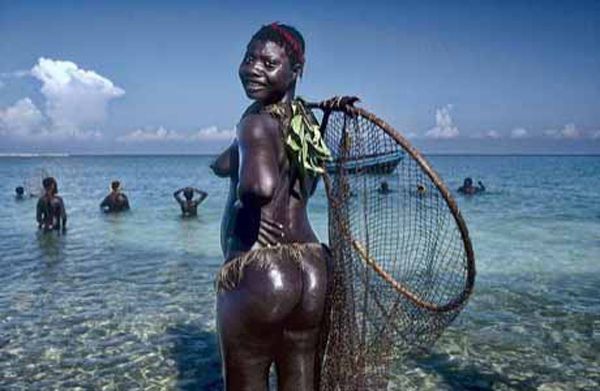
.jpg)



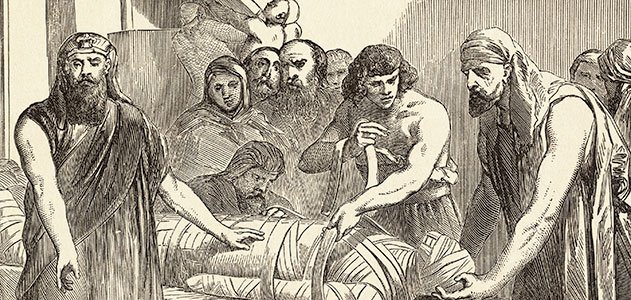
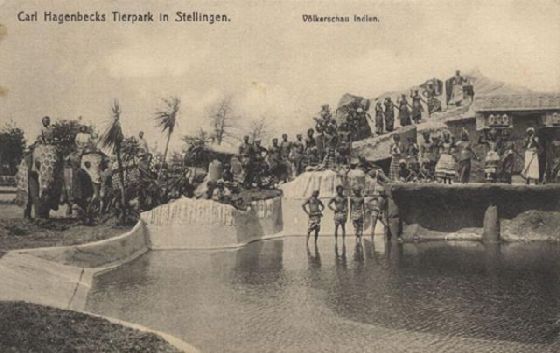
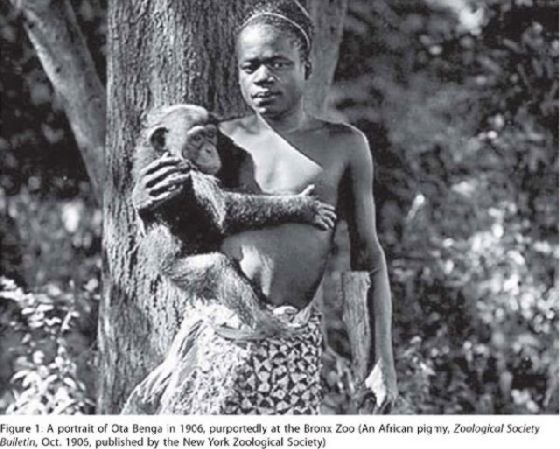

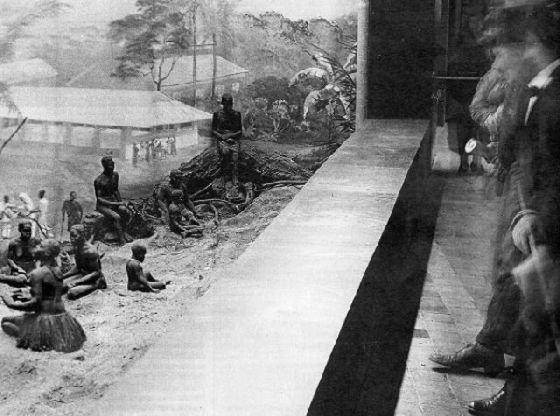
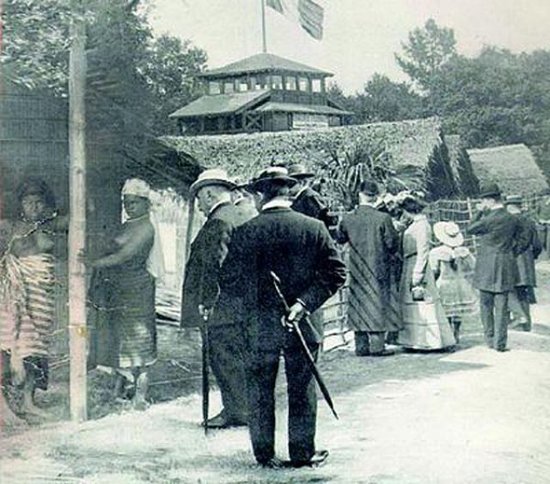
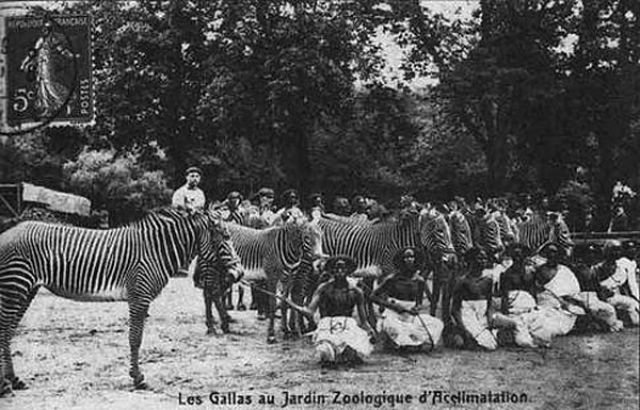
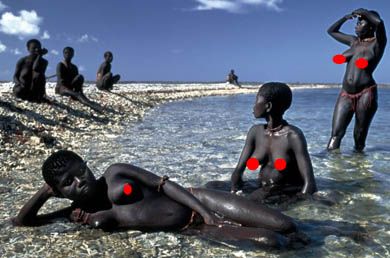




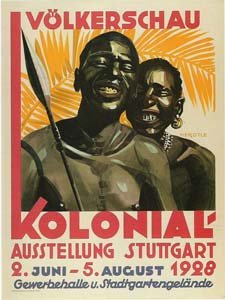
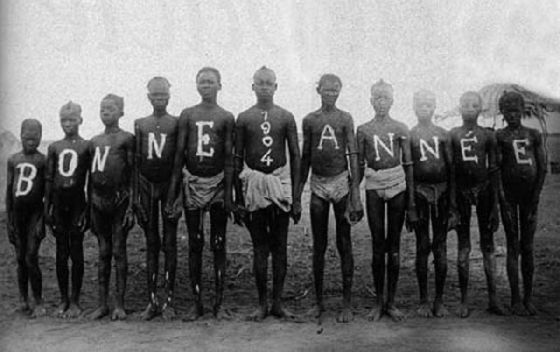










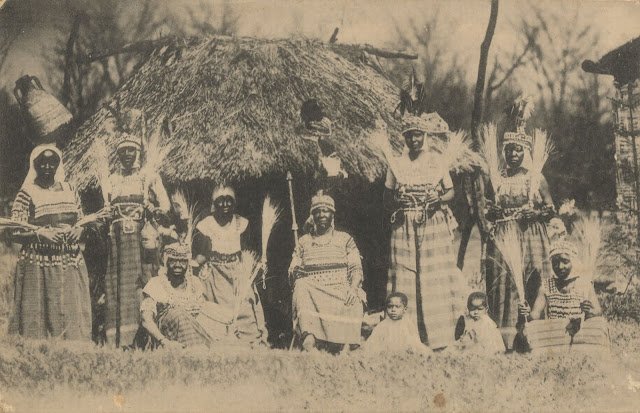
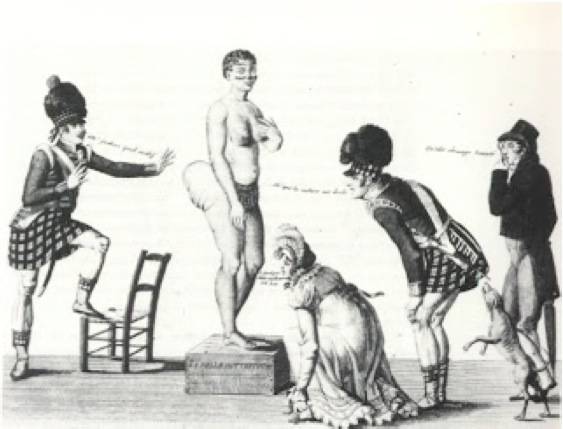
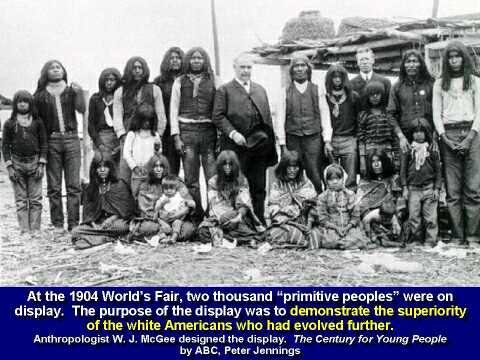
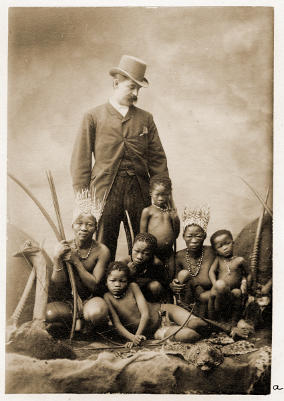
Source:
Posted by kwekudee
https://popularresistance.org/deep-racism-the-forgotten-history-of-human-zoos/
Congratulations @akhodadad! You received a personal award!
Click here to view your Board
Do not miss the last post from @steemitboard:
Vote for @Steemitboard as a witness and get one more award and increased upvotes!
Congratulations @akhodadad! You received a personal award!
You can view your badges on your Steem Board and compare to others on the Steem Ranking
Do not miss the last post from @steemitboard:
Vote for @Steemitboard as a witness to get one more award and increased upvotes!
Congratulations @akhodadad! You received a personal award!
You can view your badges on your Steem Board and compare to others on the Steem Ranking
Do not miss the last post from @steemitboard:
Vote for @Steemitboard as a witness to get one more award and increased upvotes!